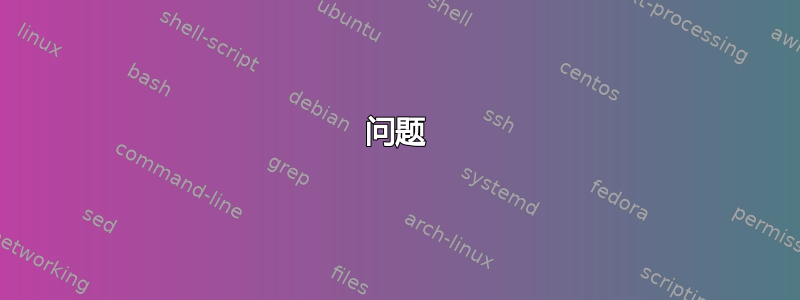
因此,我尝试重新创建以下海报(或类似的东西)
我的问题是获得正确的排版和间距。特别是,我找不到避免使用连字符的好方法。请耐心听我说,我必须展示我的努力以及我的解决方案的不同之处。
抱歉分辨率太差,但这也是我想改进它的原因之一。我使用了以下背景图片
使用\textbodyOriginal定义为
\newcommand{\textbodyOriginal{%
[...]
\enquote*{sh}, they went with the \enquote*{ck} sound, which in classical
Greek is written the chi symbol, $\chi$. This was later
translated into Latin, the chi ($\chi$) was replaced with the more common Latin $x$.
}
我制作了以下海报
与原文相比,前 9 行一致。但是,从行开始,Greek [...] trans-间距就发生了变化,因为 LaTeX 插入了一个(不需要的)连字符。我尝试通过引入
新的命令\textbody定义为
\newcommand{\textbody{%
[...]
\enquote*{sh}, \, they went with the \enquote*{ck} sound, which in classical \\
Greek \ph is \ph written \ph the \ph chi \ph symbol, \ph $\chi$. \ph This \ph was \ph later
\mbox{translated} into Latin, the chi ($\chi$) was replaced with the
\\ \centerline{more common Latin $x$.}
}
在哪里\newcommand{\ph}{\hspace{0.1em}}插入一些额外的空间。
我得到
现在字距调整几乎正确了,但是仔细检查后会发现它稍微不均匀,并且之后的间距"Shi",与行的其余部分相比当然太大了。
问题
- 有没有办法产生与第一幅图相同的文本输出?每行输出相同的单词(我在上一幅图中就是这么做的),但方法更好?
此外,我的边距感觉不对,顶部和底部边距似乎比我的侧边距大(即使我已经使用了\usepackage[margin=1.25in]{geometry}哪个应该使它们均匀?)。不过,我可能会把这个问题留到以后再问 =)
代码
\documentclass[british]{article}
\usepackage[british]{babel}
\usepackage{lmodern}
\usepackage{mathtools,amssymb}
%\usepackage[marigins=1.25in]{geometry}
\usepackage[margin=1.25in]{geometry}
\usepackage[framemethod=TikZ]{mdframed}
\usepackage{lipsum}
\mdfdefinestyle{MyFrame}{%
linecolor=white,
backgroundcolor=none,
align=center,
outerlinewidth=2pt,
innertopmargin=20pt,
innerbottommargin=20pt,
innerrightmargin=20pt,
innerleftmargin=20pt
}
\usepackage{afterpage}
\usepackage{tikz}
\usepackage[babel=true]{csquotes}
\newcommand{\ph}{\hspace{0.1em}}
\setlength\parindent{0pt}
\newcommand{\titleSymbol}{$x$}
\newcommand{\titleText}{Sheen}
\newcommand{\textbody}{%
Algebra was born in the Middle East, during the Golden
Age of medieval Islamic civilization. During this heyday,
Muslim rule and culture had expanded onto the liberian
Peninsula, where the Moors encouraged scholarship in
the sciences and math. The use of \enquote*{x} in this way began
with the inability of Spanish scholars to translate certain
Arabic sounds, including the letter sheen (or shin). But
since Spanish scholars had no corresponding sound for
\enquote*{sh}, \, they went with the \enquote*{ck} sound, which in classical \\
Greek \ph is \ph written \ph the \ph chi \ph symbol, \ph $\chi$. \ph This \ph was \ph later
\mbox{translated} into Latin, the chi ($\chi$) was replaced with the
\\ \centerline{more common Latin $x$.}
}
\newcommand{\textbodyOriginal}{%
Algebra was born in the Middle East, during the Golden
Age of medieval Islamic civilization. During this heyday,
Muslim rule and culture had expanded onto the liberian
Peninsula, where the Moors encouraged scholarship in
the sciences and math. The use of \enquote*{x} in this way began
with the inability of Spanish scholars to translate certain
Arabic sounds, including the letter sheen (or shin). But
since Spanish scholars had no corresponding sound for
\enquote*{sh}, they went with the \enquote*{ck} sound, which in classical
Greek is written the chi symbol, $\chi$. This was later
translated into Latin, the chi ($\chi$) was replaced with the more common Latin $x$.
}
\begin{document}
\pagecolor{green!10!black}\afterpage{\nopagecolor}
\tikz[remember picture,overlay]
\node[opacity=0.25,inner sep=0pt] at (current page.center){\includegraphics[width=\paperwidth,height=\paperheight]{mathMain}};
\pagestyle{empty}
\begin{mdframed}[style=MyFrame]
\color{white}
{\centering
\vspace{2cm}
{\fontsize{300}{240}\selectfont \titleSymbol }
\vspace{2cm}
{\Huge \bfseries Sheen }
}
\LARGE%
\textbody
%\textbodyOriginal
\end{mdframed}
\end{document}






